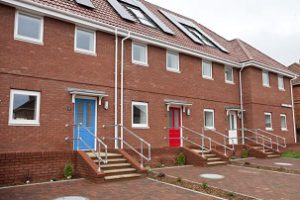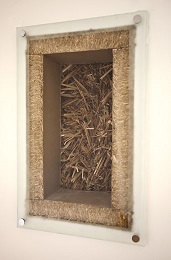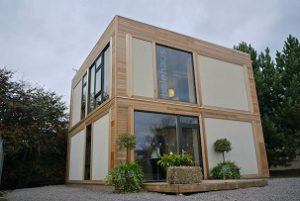Researchers of the University of Bath (UK) and ModCell Ltd have developed straw as a low-impact and viable modern building material. As they say, ‘our research has made affordable, environmentally-friendly houses a reality. The first super-insulated, low-carbon straw houses are hitting the open market.’

Straw, scientifically proven
Many disruptive construction technologies have been proposed as the ultimate solution to sustainable building, but straw has now scientifically proved its viability; and moreover, houses built with these technologies are now commercially available. On the scientific side, research has shown that these technologies are durable, genuinely environmentally beneficial, and suitable to be insured. They have acquired crucial industry certifications, notably the BM TRADA’s Q-Mark certification, that guarantees a straw building’s energy efficiency, fire safety, durability and weather-resilience. As for fire resistance, ModCell writes on its website that its bales are ‘tightly packed and covered with lime render. Fire needs a ready supply of oxygen to burn and, without it, no combustion will occur. The panels provide a near airless environment, so fire resistance is very good. Lime rendered ModCell® Traditional panel has a 2 hours and 15 minute fire certificate, over double the current UK Building Regulations requirement.’ The assignment of this Q-mark certification means that developers and homebuyers can now get insurance and mortgages for straw homes and buildings. Moreover, the prestigious Passivhaus accreditation recognises a building design’s energy efficiency, high-performance insulation and air quality.

Commercially successful
On the commercial side, ModCell has developed a construction technique that incorporates straw. They infill prefabricated panels consisting of a wooden structural frame with straw bales or hemp, and render this with either a breathable lime-based system or ventilated timber or brick cladding. A technique with a very low CO2 footprint. These buildings can even be carbon negative as straw absorbs CO2 when it grows. In Shirehampton, Bristol, seven new townhouses constructed with this technique have just gone on sale in the open market. The houses are roofed with 2.2 kW of solar panels, an airsource heat pump, an MVHR system (mechanical ventilation heat recovery), and rain water harvesting storage tanks. The expected fuel bill reduction of these houses is up to 90%.

Decade of data to scientifically back straw
At the University of Bath, the journey of the Department of Architecture & Civil Engineering into straw building began over a decade ago: researchers then started developing an understanding of the load-bearing capabilities of the material. In 2005, the research group, led by Pete Walker, began a collaboration with ModCell Ltd to develop prefabricated straw bale cladding panels. Research was funded by the British government and the EU to investigate structural and durability aspects and the potential to upscale. To test durability, energy consumption and moisture content in situ, the team built a prototype – ‘BaleHaus’, with an obvious reference to BauHaus – on the university campus. They carried out weatherproof testing in a very exposed site on the blustery Cornish coast as well as in the lab. The ModCell panels have been blasted by simulated hurricane-force wind loads, soaked in water to simulate flooding and exposed to roaring fires. In 2014, the research culminated in the sought-after industry certificate, which provided the construction sector with scientific proof that straw is durable, genuinely environmentally beneficial and suitable to be insured.
Community impact
‘The potential of straw-bale construction,’ so the Department writes, ‘extends beyond residential buildings and is already proving to have a positive impact in local communities. In 2012, Hayesfield School in Bath opened a new science block for its students, The Nucleus. In the building, ModCell technology doubles as a building material and as a teaching aid – students have first-hand access to learn about the properties of the material. The Nucleus uses these panels also as a roof. All the materials used in ModCell panels – straw, lime and timber – can be locally sourced. The overall carbon footprint is further reduced by minimising logistics – all panels are put together within 15 miles of the construction site at mobile factories.’
In short, straw proves to be a sustainable construction material in many ways. As it is almost universally available, its application should make an impressive take-off. Maybe something for earthquake-prone areas?
Interesting? Also read:
Sustainable construction means organising horizontally
Sustainable timber tower on the rise
Rapeseed as a frontrunner in agricultural innovation
Mycelium, the ultimate green material

I live in America
I’d love to enclose a room downstairs
Who could I Contact